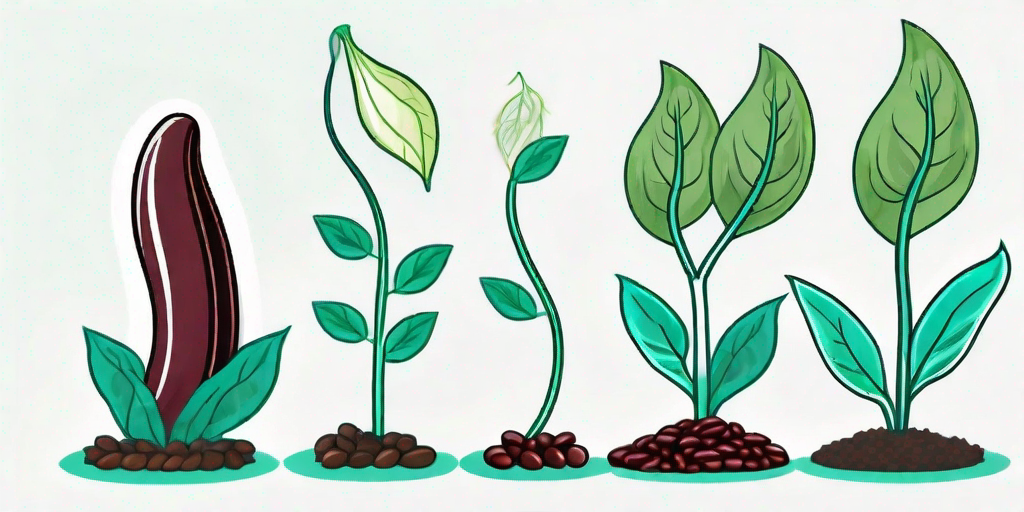
Welcome, green-thumbed enthusiasts and curious readers alike! Today, we're embarking on a thrilling journey. We'll be following the life of a humble kidney bean from its humble beginnings as a seed, to its triumphant finale as a fully grown plant. So, fasten your seatbelts, or rather, your gardening gloves, and let's dive in!
The Birth of a Bean: Planting the Seed
Our journey begins with a tiny, unassuming kidney bean seed. Don't be fooled by its size, though. This little seed is a powerhouse, packed with potential life. It's like a miniature Jack's magic bean, minus the giant and the golden goose, of course.
Planting a kidney bean seed is as easy as pie. Simply dig a small hole about an inch deep in a pot filled with well-drained soil. Pop the seed in, cover it with soil, and voila! You've just planted a kidney bean seed. Give yourself a pat on the back!
Choosing the Right Soil
Not all soils are created equal, especially when it comes to growing kidney beans. These plants prefer a slightly acidic to neutral pH. So, if your soil is more Kardashian than kidney bean-friendly, you might want to add some organic matter or compost to balance things out.
Also, ensure your soil is well-draining. Kidney beans aren't fans of waterlogged conditions. They prefer their homes to be more like a cozy cottage than a swamp.
The Growing Phase: From Seedling to Plant
Once you've planted your seed, it's time to sit back, relax, and let nature do its thing. Well, not entirely. You still have some responsibilities. Think of yourself as the bean's personal trainer, guiding it through its growth workout.
After about a week, you'll notice your seed sprouting into a seedling. This is a crucial stage in the bean's life, much like a teenager's awkward puberty phase. It's here that the bean develops its first set of true leaves.
Watering and Feeding Your Bean
Watering your kidney bean plant is a bit like Goldilocks' porridge scenario. It shouldn't be too much or too little, but just right. Overwatering can lead to root rot, while underwatering can stunt the plant's growth. The soil should be moist, but not soggy.
As for feeding, your bean doesn't need a five-course meal. A simple, balanced fertilizer applied once a month should suffice. Remember, it's a bean, not a gourmet food critic.
The Grand Finale: Harvesting Your Beans
After about 75 to 115 days, depending on the variety, your kidney bean plant will be ready for harvest. This is the moment you've been waiting for, the grand finale of the bean's journey. It's like the season finale of your favorite show, but with more beans and less cliffhangers.
Harvesting is simple. Just pick the pods when they're firm and fully grown, but before they start to yellow. If you're unsure, just remember this simple rhyme: "If it's green and firm, it's your turn. If it's yellow and soft, hold off."
Storing Your Beans
Once you've harvested your beans, it's time to store them. You can either eat them fresh or dry them for later use. To dry them, simply spread them out in a cool, dry place and let them dry naturally. Once they're dry, store them in an airtight container. They're like little edible treasures, waiting to be discovered in your pantry.
And there you have it! The journey of a kidney bean from seed to harvest. It's been a wild ride, hasn't it? But remember, every bean's journey is unique. So, don't be disheartened if your bean doesn't follow this exact path. After all, variety is the spice of life!
FAQs
How long does it take for a kidney bean to grow?
It typically takes between 75 to 115 days for a kidney bean plant to grow from seed to harvest. However, this can vary depending on the variety and growing conditions.
What type of soil is best for kidney beans?
Kidney beans prefer slightly acidic to neutral pH soil that is well-draining. If your soil doesn't fit this description, you can amend it with organic matter or compost.
How often should I water my kidney bean plant?
Water your kidney bean plant when the top inch of soil feels dry. Be careful not to overwater, as this can lead to root rot.
Final Thoughts
So, there you have it, folks! The epic journey of a kidney bean from seed to harvest. It's a tale of growth, resilience, and the magic of nature. And the best part? You can experience this journey in your own backyard. So, why not give it a try? Who knows, you might just find yourself with a newfound appreciation for these humble legumes.
Happy gardening!











